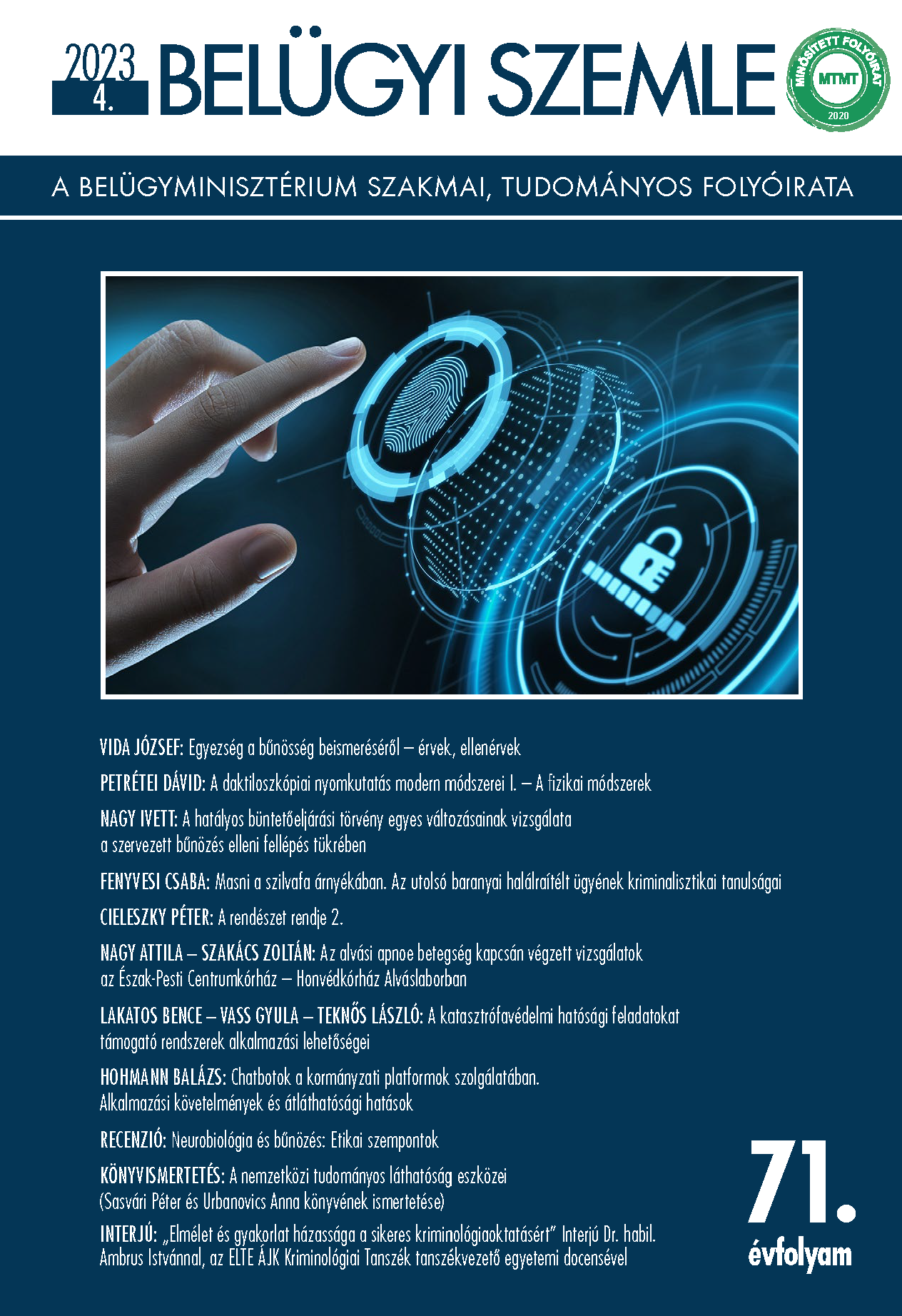Abstract
Aim: Crime cannot go unpunished – so the saying goes. The ever-changing activities of organised crime groups have made disrupting and dismantling them a priority for the police. Among other things, the fight against organised crime is facilitated by domestic legislation, including the chapters of Act XC of 2017 on the Code of Criminal Procedure, which fundamentally changed the collection of secret information from 1 July 2018, when the Act was promulgated. Therefore, its practical and law enforcement manifestation, its new possible organisational model, as well as the comparison with the solutions developed in other EuropeanUnion Member States are indispensable. The author with her study specifically intended to examine the practice of the application of the Criminal Procedure Act in the field of criminal investigation, in particular from the perspective of the legal professions, the prosecution and the investigating authority, since the everyday application of criminal procedure may give rise to a number of phenomena that may highlight potential problems. A research question was formulated: to what extent has the fight against organised crime in Hungary been facilitated by certain changes in the existing Criminal Procedure Act?
Methodology: The aim of the research methods used is to demonstrate the consistency of theory and practice. The study includes, inter alia, descriptive analysis in conceptual, institutional and organisational aspects, as well as case law analysis and legislative analysis. The research is based on a case study of an ongoing investigation into the crime of trafficking in human beings and the fact that Member States within the European Union have agreed to set up a joint investigation team as parties to the case. The case study will also provide an opportunity to monitor possible obstacles to international criminal cooperation, including the identification of other obstacles that may have arisen during the coronavirus epidemic. Prior to the analysis of the case study, spontaneous interviews were also conducted with police and judicial authorities. Interviews were conducted with investigators on the police side and prosecutors on the judicial side. In the course of the research, the author also looks at the procedures developed in other EU Member States.
Findings: The emergence and transformation of disguised instruments in domestic criminal proceedings – according to the research carried out for the study – differs between the police and the prosecution. In practice, the effectiveness of the joint investigation team can be traced in several ways. In cases with an international dimension, there are a number of advantages to be gained from Member States agreeing to set up a joint investigation team, both in terms of removing procedural obstacles and in terms of international criminal and judicial cooperation.
Value: The findings of the study may be useful for practitioners in the investigative authorities involved in cases with an international dimension, as well as for the prosecution service, to provide a cross-section of the current situation, with the additional aim of giving the issues described here some consideration. In addition, the study also provides an insight into the implementation of international criminal cooperation in the period of the coronavirus epidemic.

